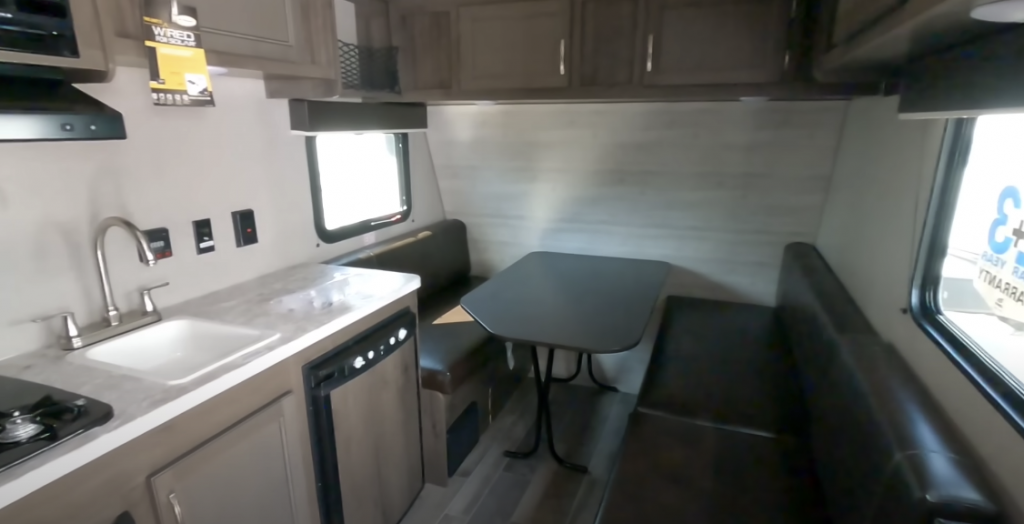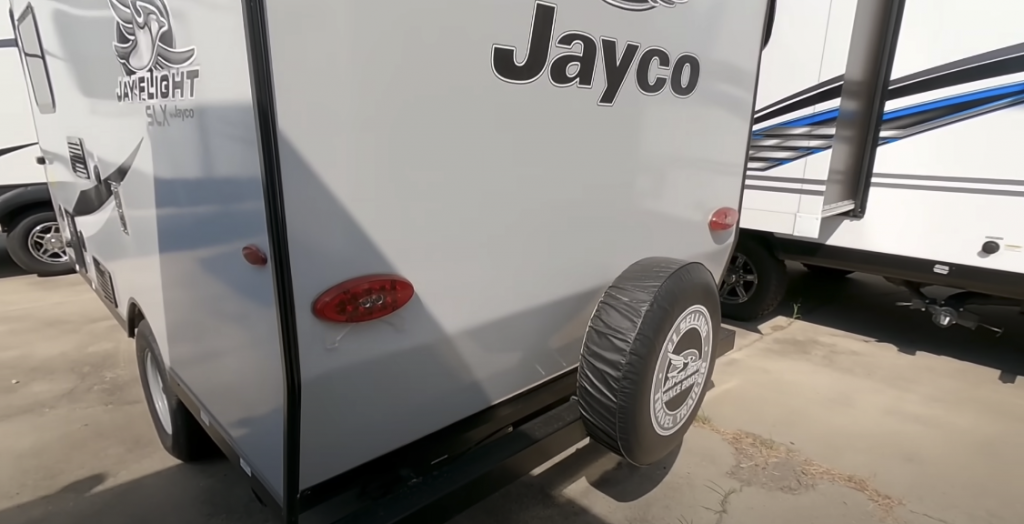
Unveiling the Allure of Small RVs: A Comprehensive Insight
The Recreational Vehicle (RV) industry has seen a notable shift towards smaller, more manageable, and economical options. Small RVs have become a beacon of freedom for modern adventurers, solo travelers, retirees, and even digital nomads. This article aims to provide an in-depth understanding of small RVs, focusing on their types, benefits, cost, maintenance, and frequently asked questions.
Types of Small RVs: An Extensive Classification
Class B Motorhomes
Class B motorhomes, also known as camper vans, are the smallest fully self-contained motorhomes. Despite their compact size, they offer the basic amenities of a home – a bed, kitchen, and bathroom.
- Bedroom: The sleeping quarters in Class B RVs often serve a dual purpose. During the day, they can transform into a living area with bench seats and a table;
- Kitchen: The kitchenettes, though small, are fully functional with a two-burner stove, refrigerator, sink, and sometimes even a microwave;
- Bathroom: Wet bathrooms are common in Class B motorhomes. These combine the shower, sink, and toilet in one waterproof cubicle to save space;
- Models: Some popular Class B motorhomes are Airstream Interstate 19, Pleasure-Way Tofino, and Winnebago Revel.
Travel Trailers
Travel trailers provide a balance between space and portability.
- Layouts: Travel trailers come with diverse layouts to suit various needs. They may offer a dedicated bedroom or a convertible dinette/bed space. Kitchens are generally more spacious than in Class B motorhomes, and bathrooms can be either wet or separate;
- Expandability: Some travel trailers feature slide-outs to increase living space when stationary;
- Models: Popular travel trailer models include the Airstream Bambi, Forest River R-Pod, and Scamp 13′ Deluxe.
Truck Campers
Truck campers are portable units that you mount onto a pickup truck’s bed. They are perfect for off-road adventures.
- Compactness: They offer essential amenities like a bed, kitchenette, and wet bath in a compact space;
- Compatibility: Different truck campers are designed for different truck sizes, and not every camper is compatible with every truck;
- Models: Some notable truck camper models are the Lance 650, Arctic Fox 811, and Northern Lite 8-11 EX.
Pop-up Campers
Pop-up campers, or tent trailers, offer a blend of traditional camping and RVing experiences.
- Convertible Space: These RVs expand and contract, offering a spacious interior when set up and compact size for towing;
- Amenities: Depending on the model, a pop-up camper can include beds, a dining area, a simple kitchenette, and a portable or cassette toilet;
- Models: Some of the popular pop-up camper models are the Forest River Flagstaff, Jayco Jay Sport, and Coachmen Clipper.
Teardrop Trailers
1.5.1 Features: Teardrop trailers are small, aerodynamic trailers perfect for solo travelers or couples.
- Design: They typically feature a sleeping area in the front and a galley kitchen in the rear. Some models offer an attached tent or roof-top tent for additional sleeping or living space;
- Amenities: Amenities are minimal, usually offering a sleeping space for two and an outdoor kitchen. A few high-end models might include a compact indoor bathroom;
- Models: Popular teardrop trailer models include the Airstream Basecamp, Little Guy Mini Max, and nuCamp TAB 320.
Examining the Benefits of Small RVs

Maneuverability
Small RVs are easier to handle, making driving, parking, and navigating through cities or tight campgrounds more convenient. They can squeeze into tighter camping spots, offering more options when choosing a site.
Economical
They are generally cheaper to buy, maintain, and run. Lower fuel consumption translates to less money spent on gas. Insurance and maintenance costs are also typically lower than for larger RVs.
Accessibility
Small RVs allow you to reach remote, off-grid locations inaccessible by larger RVs. Their compact size allows for maneuvering along narrow roads and bridges with weight restrictions.
Ease of Setup
Setting up camp is often simpler and quicker with a small RV. This feature becomes particularly beneficial when frequently moving between sites.
Eco-Friendly
Small RVs have a smaller environmental footprint, consuming less fuel and requiring fewer materials for construction. This aspect is particularly appealing to eco-conscious travelers.
Understanding the Costs of Small RV Ownership
Initial Purchase Price
The initial cost of a small RV varies significantly depending on the type, make, model, size, age, and included features. As of 2023, a new small RV could range anywhere between $10,000 and $150,000.
Here is a simplified cost comparison across different types of small RVs:
| RV Type | New (Low End) | New (High End) | Used (Low End) | Used (High End) |
|---|---|---|---|---|
| Class B | $70,000 | $150,000 | $35,000 | $100,000 |
| Travel Trailer | $15,000 | $40,000 | $7,000 | $30,000 |
| Truck Camper | $10,000 | $50,000 | $5,000 | $35,000 |
| Pop-up Camper | $8,000 | $20,000 | $2,000 | $15,000 |
| Teardrop Trailer | $10,000 | $35,000 | $5,000 | $25,000 |
Recurring Costs
Apart from the purchase price, owning an RV comes with ongoing costs, including:
- Maintenance: Regular upkeep is crucial to maintain the RV’s condition and prevent costly repairs. On average, small RV owners spend about $1,000-$2,000 per year on maintenance;
- Insurance: Small RV insurance can cost anywhere from $200 to $2,000 per year, depending on factors such as RV type, value, how often it’s used, and where it’s stored;
- Fuel: Fuel costs depend on factors like the weight of your RV, driving speed, and terrain. Generally, smaller RVs offer better gas mileage, resulting in lower fuel costs;
- Campground Fees: These can range from free (boondocking or staying in a friend’s driveway) to over $100 per night for high-end RV resorts.
Maintenance of Small RVs

Owning a small RV can provide a great way to explore the open road and enjoy the comforts of home while on the go. However, like any vehicle, regular maintenance is essential to keep your RV in optimal condition and ensure it lasts for many memorable trips. In this guide, we will discuss the key aspects of maintaining small RVs and provide you with a comprehensive checklist to follow.
Regular Check-ups
Performing regular check-ups on your small RV is crucial for identifying potential issues early on and preventing costly repairs down the road. Here are the key areas to inspect:
| Category | Maintenance Task |
|---|---|
| Engine | Check the engine oil level, coolant level, and transmission fluid. Look for any signs of leakage, unusual noises, or vibrations. |
| Brakes | Inspect the brake pads, rotors, and brake lines for wear and tear. Ensure that the brake fluid level is adequate. |
| Tires | Check the tire pressure regularly and maintain it according to the manufacturer’s recommendations. Replace any damaged or excessively worn tires. |
| Battery | Test the battery’s voltage and ensure it is holding a charge. Clean the battery terminals and cables to prevent corrosion. |
| Lights | Inspect all exterior and interior lights, including headlights, taillights, turn signals, and brake lights. Replace any burnt-out bulbs. |
| Leaks | Check for any leaks in the RV’s plumbing, fuel system, or engine. Pay attention to signs of water damage or fluid stains. |
| Roof and Sealants | Inspect the roof for any cracks, tears, or signs of deterioration. Check the sealants around vents, windows, and seams to ensure they are watertight. |
| Appliances and Systems | Test all the appliances and systems in your RV, such as the refrigerator, stove, air conditioner, heater, and water heater. Ensure they are functioning properly and address any issues promptly. |
Seasonal Maintenance
As the seasons change, it is essential to perform specific maintenance tasks to protect your small RV from potential damage. Consider the following seasonal maintenance steps:
- Winterization: Before the winter season, it is crucial to winterize your RV to prevent freezing damage. This process typically involves draining the water system, adding antifreeze, and covering the RV to protect it from the elements;
- De-winterization: In preparation for the camping season, de-winterize your RV by flushing out the antifreeze, sanitizing the water system, and ensuring all systems are operational;
- Spring Cleaning: Give your RV a thorough cleaning to remove any dirt, dust, or debris that may have accumulated during storage. Check for signs of pest infestation and take appropriate measures if necessary;
- Summer Preparations: Inspect and clean the air conditioning system, awning, and outdoor furniture. Ensure that all ventilation systems are working correctly to keep the RV cool during hot summer months.
Maintenance After Each Trip
After returning from a trip, it is essential to perform certain maintenance tasks to keep your small RV in top shape. Follow these steps:
- Cleaning: Thoroughly clean the interior and exterior of your RV. Remove any food items to prevent attracting pests. Empty and clean the waste tanks;
- Inspection: Perform a quick inspection of the RV to identify any damage that may have occurred during the trip. Look for scratches, dents, or loose components. Address any issues promptly to prevent further damage.
By following these maintenance guidelines and regularly inspecting your small RV, you can ensure that it remains in excellent condition for your future adventures. Remember to consult your RV’s owner’s manual for specific maintenance instructions and schedules provided by the manufacturer.
Note: Remember to perform seasonal maintenance tasks such as winterization and de-winterization, as well as thorough cleaning and inspections after each trip.
Conclusion
The small RV represents a new era of compact, flexible, and eco-friendly adventuring. It caters to a variety of users, from solo travelers to small families, providing comfort, mobility, and independence. Its economical value, coupled with lower operating costs and the ability to navigate hard-to-reach locales, make it an ideal choice for modern explorers. In essence, small RVs are redefining the norms of travel and leisure, underscoring the appeal of minimalism and the joy of a simpler, unencumbered life on the open road.
FAQS
Yes, most small RVs can fit into regular parking spots, which is one of their significant advantages. However, it’s essential to check parking regulations, as some areas restrict overnight RV parking.
Small RVs can be suitable for small families. Some models offer creative layouts and features like bunk beds to accommodate more people. However, they may not offer as much space and privacy as larger RVs.
Yes, you can live full-time in a small RV. Many people do, enjoying the freedom and flexibility it offers. However, it requires adapting to a minimalist lifestyle.
In most cases, a regular driver’s license is sufficient to drive a small RV. However, requirements can vary, so it’s best to check local regulations or with the RV rental or sales agency.
With proper care and maintenance, a small RV can last for 10 to 20 years or even longer. The lifespan will depend on how often it’s used, where it’s stored, and how well it’s maintained.
Small RVs offer a unique blend of comfort, freedom, and affordability. They are an excellent choice for adventurous spirits seeking to explore the open road without the burden of large size and costs.
Yuriy Moshes has spanned several areas of law but his expertise lies in litigation and real estate transactions. Over the years, he has assisted homeowners understand their options and either remain in their home or pursue possible liquidation options. He graduated from Brooklyn College with a Bachelors of Science degree and a Juris Doctor from the Touro College Jacob D. Fuchsberg Law Center.